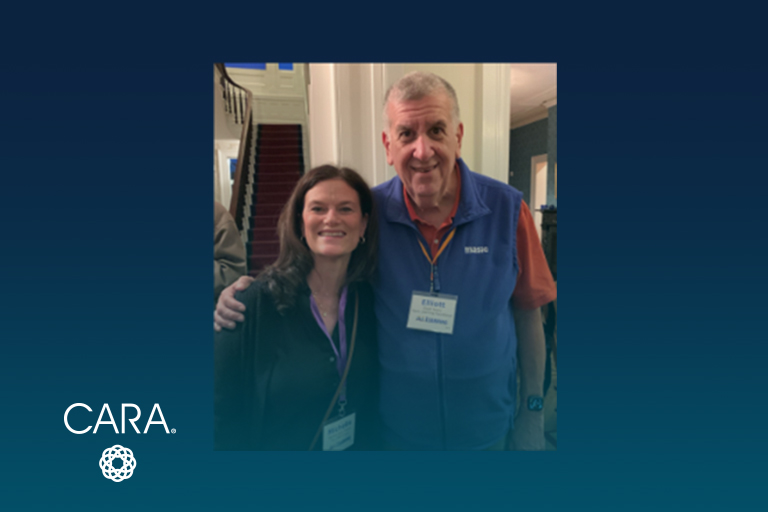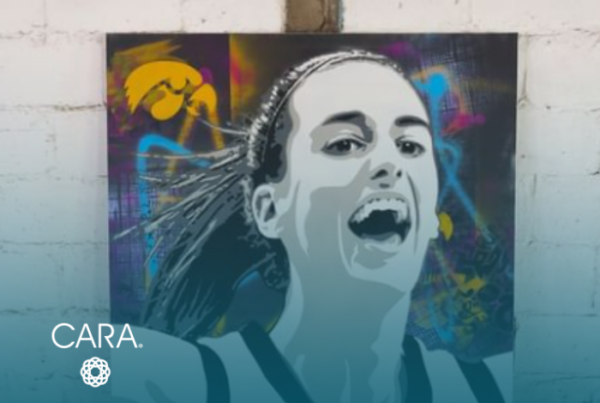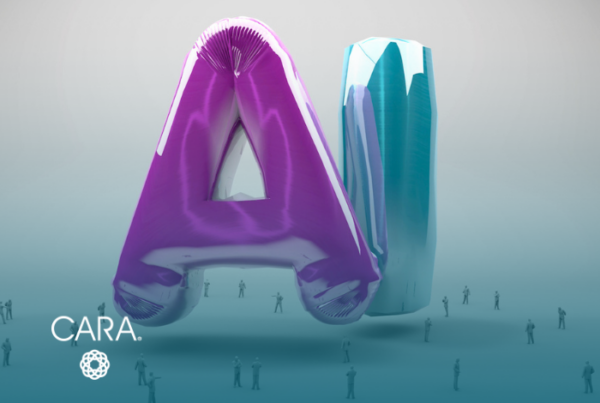
I recently returned from a pilgrimage to Saratoga Springs, NY where Elliott Masie led fifty executives through a lab experience to explore the impact of AI in learning and development. Because even Bard and Claude would have trouble distilling two days of highly interactive content, plus all the additional AI research I’ve been doing into one short blog, I decided to kick it old school with a good old-fashioned human-generated “top five” list of key takeaways.
1. Meet your new co-worker
Instead of asking how AI will replace traditional learning and development (L&D) methods, Masie suggested we ask ourselves, “How might we combine HI (human intelligence) with AI (artificial intelligence) to optimize workplace learning?”
When ChatGPT dropped, we saw how quickly large language models could generate very specific content. Suddenly, the sheer power of generative AI was available to all who prompted it (much to the dismay of high school teachers everywhere). But (for now), in order for AI to do its thing, it requires HI to ask it the right questions and to evaluate and leverage the output appropriately.
Put another way, AI is like a new, naïve, know-it-all teammate (but with really low empathy). We can work together successfully if we understand how to leverage each other’s strengths. Who doesn’t need performance support? And the good news appears to be that this teammate is capable of learning.
“AI is like a new, naïve, know-it-all teammate (but with really low empathy).”
2. Tell it what you want (what you really, really want)
We know that when Googling, broad questions are best in order to cast a wide net. Not so with AI. “Prompt Engineering,” the art of skillfully asking AI chatbots to produce a result, is the hottest topic in upskilling. However, this skill may be short-lived. Masie predicts that future AI will include an interface that identifies how it can help you, thus obsoleting this skill almost as quickly as community colleges are scrambling to create a certification for it. “AI will go underground,” Masie says, “It will simply be integrated into every task.”
In the meantime, here is a list of what you should include to get the most out of your AI chatbot:
- The role or point of view the AI should assume
- The task you want to be completed
- The audience and the context
- The tone of the communication
- The format of the output
It’s also good to include examples and even constraints. Unlike your significant other, AI doesn’t mind if you go on and on about your needs. And, if it’s not too meta, you can even prompt it to create a good prompt. Far out.
“Unlike your significant other, AI doesn’t mind if you go on and on about your needs.”
3. Trust but verify
More bad news about your new coworker. It hallucinates. It drifts. It’s riddled with bias. And, it may just be getting dumber over time.
Hallucination occurs when generative AI confidently presents content that is not true. When an answer isn’t evident in what it has been trained on, it… gets creative. After all, it is supposed to review and suggest answers humans may not see, right? That’s kind of its jam. Unfortunately, this tendency toward invention also makes it unreliable.
Drift occurs when large language models behave in ways inconsistent with the original parameters. Theoretically, as these systems assimilate information, they should be training themselves to become more accurate. Unfortunately, that’s not happening. In fact, a new Standford study suggests that ChatGPT is becoming “dumber” with use.
Finally, Large Language Models learn from datasets of human-generated content. That means LLMs inherit every kind of bias: race, gender, ethnicity, socioeconomic, contextual, and linguistic, etc.
It will take time to address these challenges. In the meantime, it’s up to Human Intelligence to review and approve any content sourced from AI.
“Hallucination occurs when generative AI confidently presents content that is not true.”
4. Guidance required
Because of the above, organizations are working to establish internal regulatory frameworks that address the following:
- Staying up-to-date with relevant regulations and industry standards to avoid legal risks.
- Implementing data privacy measures to protect sensitive information.
- Continuously addressing biases to mitigate discrimination and unfairness.
- Defining roles and responsibilities for AI governance, including oversight by a dedicated committee or executive.
- Conducting regular assessments to identify potential risks and develop mitigation strategies.
- Fostering a culture of continuous learning and adaptation to stay current with AI advancements and challenges.
HR, Learning, and Change leaders – the keepers of organizational knowledge, employee experience, skill development, careers, and even compliance – must have a seat at the table to lead the way forward to the future that includes HI + AI working in tandem.
5. Knowledge really is power
Learning and development as a discipline has been slow to upskill in data literacy and emerging technologies. Masie suggests that embracing these skills is no longer a professional choice; it is a strategic necessity.
Data literacy enables learning experts to interpret and analyze information, providing insights to make informed decisions. Becoming conversant in the language of AI is also important, as increased fluency expands our credibility and empowers us to drive initiatives, influence organizational decisions, and craft innovative learning experiences that leverage AI.
Artificial Intelligence has the potential to change every job role in every industry. The impact on the workforce is too enormous to leave to the IT department. Learning leaders who embrace and grow their knowledge will have an opportunity to influence who, what, why, when, where, and how their organizations will learn in the future.
“AI has the potential to change every job role in every industry. The impact on the workforce is too enormous to leave to the IT department.”
If you’re ready to upskill your team on AI—let’s connect. We have the experienced learning and change management solutions to meet your organization where it is today, and to help you lead the way into the future.
Let’s get started


